A classic condiment popular in Atlantic Canada, mustard pickles are sweet, tangy, and the perfect condiment to serve with cold roasted meats, sausages, and poultry. Mustard pickles are also delicious when used as a relish on burgers and sandwiches!
Traditionally served as a condiment over Christmas and Thanksgiving, leftover turkey pairs extremely well with mustard pickles!
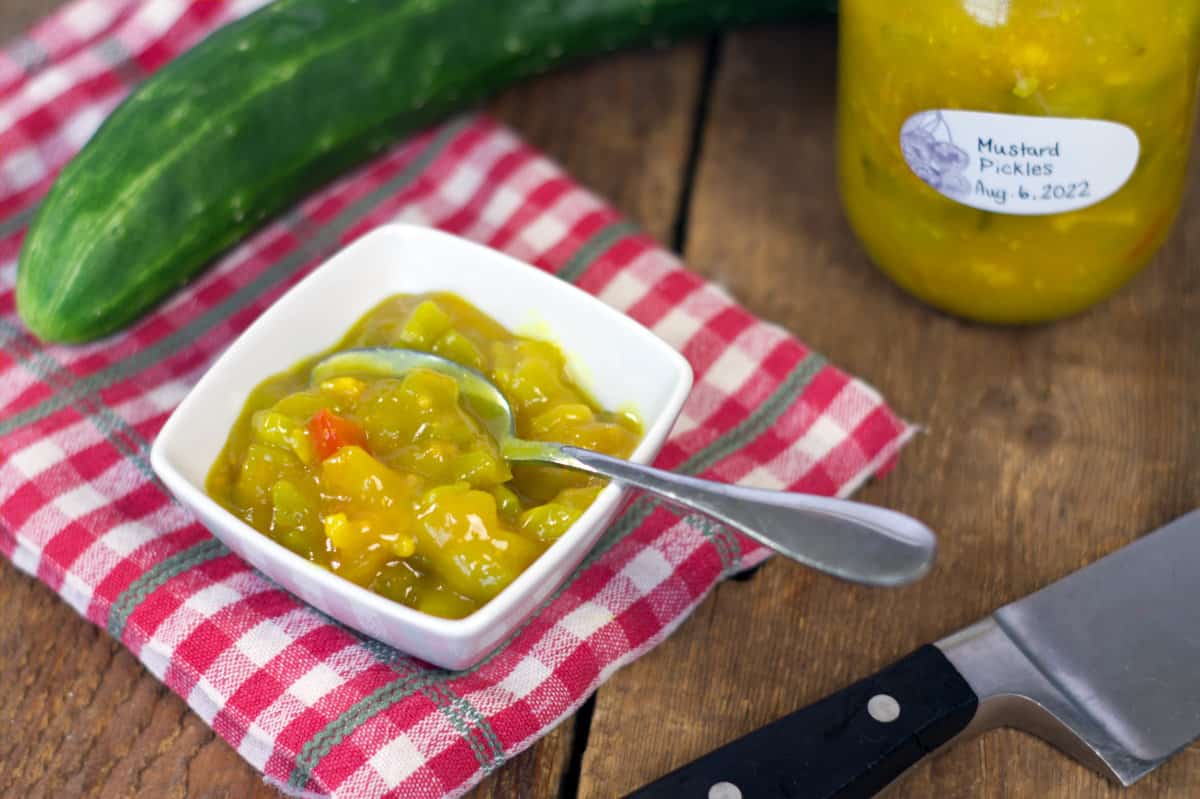
Featured in: Christmas Day Dinner Ideas.
This post contains affiliate links for which we may be compensated if a purchase is made through the links provided at no extra cost to you. For more information, please read our affiliate disclosure.
This recipe is a great way to preserve a bumper crop of cucumbers from the garden, and the mustard pickles make a great gift for anyone, especially those who grew up on the East Coast of Canada!
Mustard Pickles or Piccalilli? Are They The Same?
While very similar in nature, the main difference between mustard pickles and piccalilli seems to be regional variations on the traditional recipe.
Known as Piccalilli or Indian Pickle in the UK, this tasty condiment is most often made of chunky cucumbers, onions, and cauliflower with recipes tracing back all the way to the 18th century.
The North American version of piccalilli often includes red or green bell peppers and is more of a sweet pepper relish. It is often dark green in color though yellow, British style versions are available. It is often served with hot dogs and burgers.
This mustard pickle recipe presented here is a Canadian East Coast, version, and more closely resembles the British piccalilli, with the addition of bell peppers for color.
What kind of cucumbers should you use?
When making mustard pickles at home, (or any pickles for that matter), it is ideal to use 'pickling cucumbers'. These are sometimes also called field cucumbers and usually range in length from 4 to 6 inches depending on the variety.
True pickling cucumbers will have more 'flesh' and less off the soft, seed filled center, reducing the amount of waste and natural water that needs to be drawn out of the cucumbers before they are pickled.
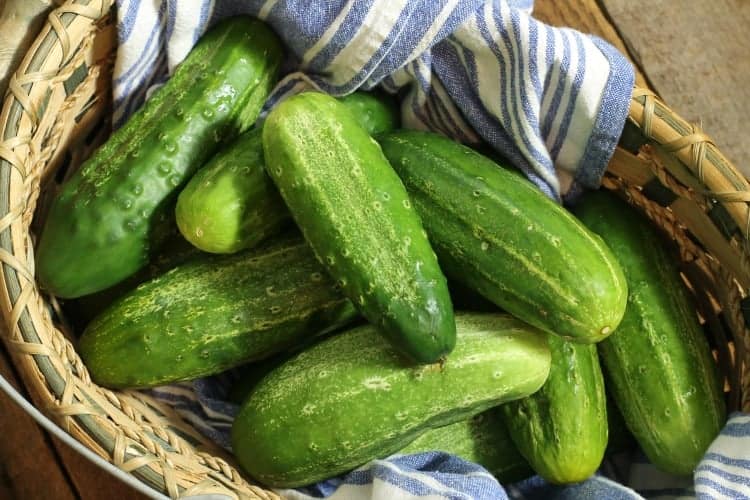
In a pinch, English cucumbers may also be used, though it is best to remove the soft seed filled centers to avoid watering down the recipe.
Do I have to water bath can this recipe?
While canning this recipe with the hot water bath method is ideal for long term storage, you can easily just cook the recipe and then cool and store the mustard pickles in the refrigerator for 3 to 4 weeks in a nonreactive, air tight container.
If you do decide to process the mustard pickles, the canned jars will easily last 8 months or longer if stored in a cool, dark pantry.
What ingredients will you need?
To make this mustard pickle recipe at home you'll need:
For the vegetables
- 2 liters cucumber - peeled, core removed, and diced. *updated September 5, 2022, to correct an error in the recipe cucumber: sauce ratio*
- ½ head cauliflower - cut into small florets
- 1.5 lb white onion - cut into a small dice
- 1 red bell pepper - cut into a small dice
- 2 Tablespoon coarse salt
For the sauce
- 3.5 cup white sugar
- 2 cup pickling vinegar
- 1 tablespoon dry mustard powder
- 1 tablespoon turmeric
- 1 tablespoon whole mustard seed
- 12 tablespoons all purpose flour
If you plan on canning the mustard pickles in glass jars you will also need:
- 6 pint jars
- 6 two piece lid and screw bands
- A large water bath canner,
- a medium sized pot to sterilize lids
- canning tongs
- a wide-mouth funnel
- a ladle
Preparing & cooking the vegetables
- Begin by washing the cucumbers, the cauliflower, and the red bell pepper. Once washed, pat the vegetables dry, and proceed with peeling and cutting.
The cucumbers should be peeled, core removed, and cut into medium dice. Once the cucumbers are cut, sprinkle the coarse salt over the cucumbers and mix well. Set aside to let the salt draw some of the water out of the cucumbers.
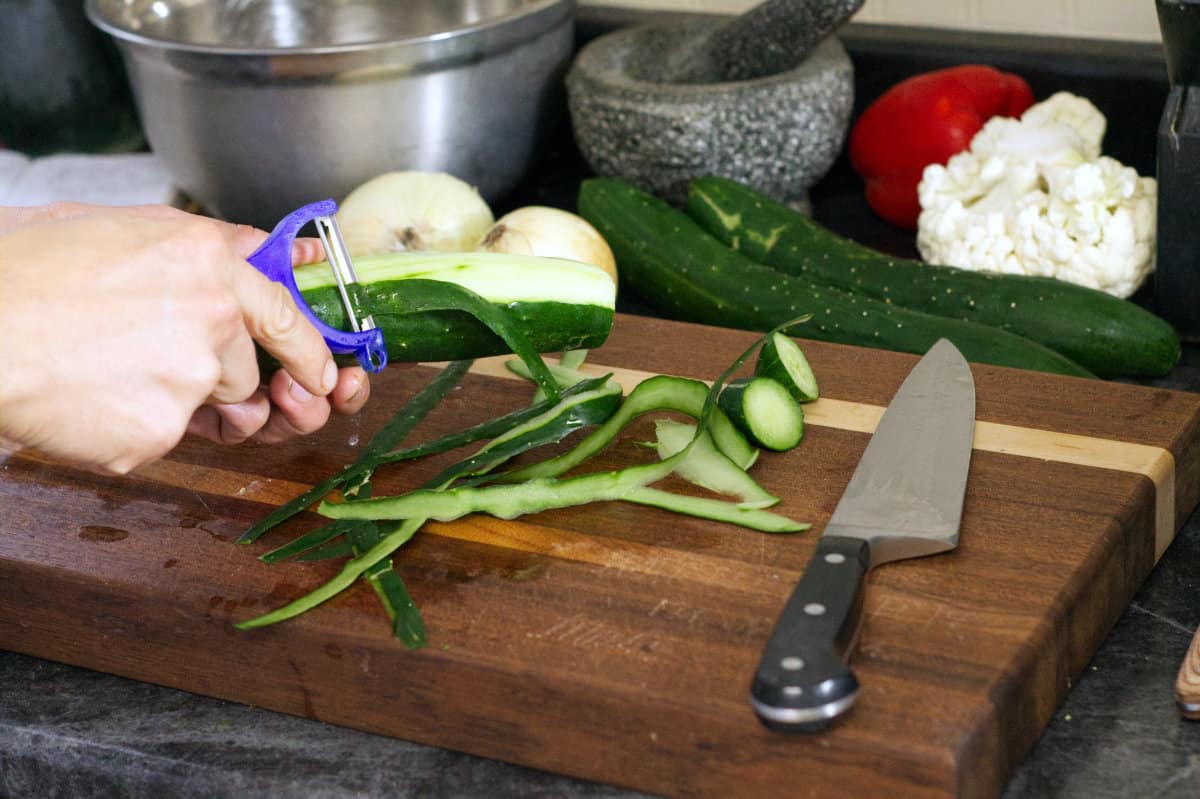
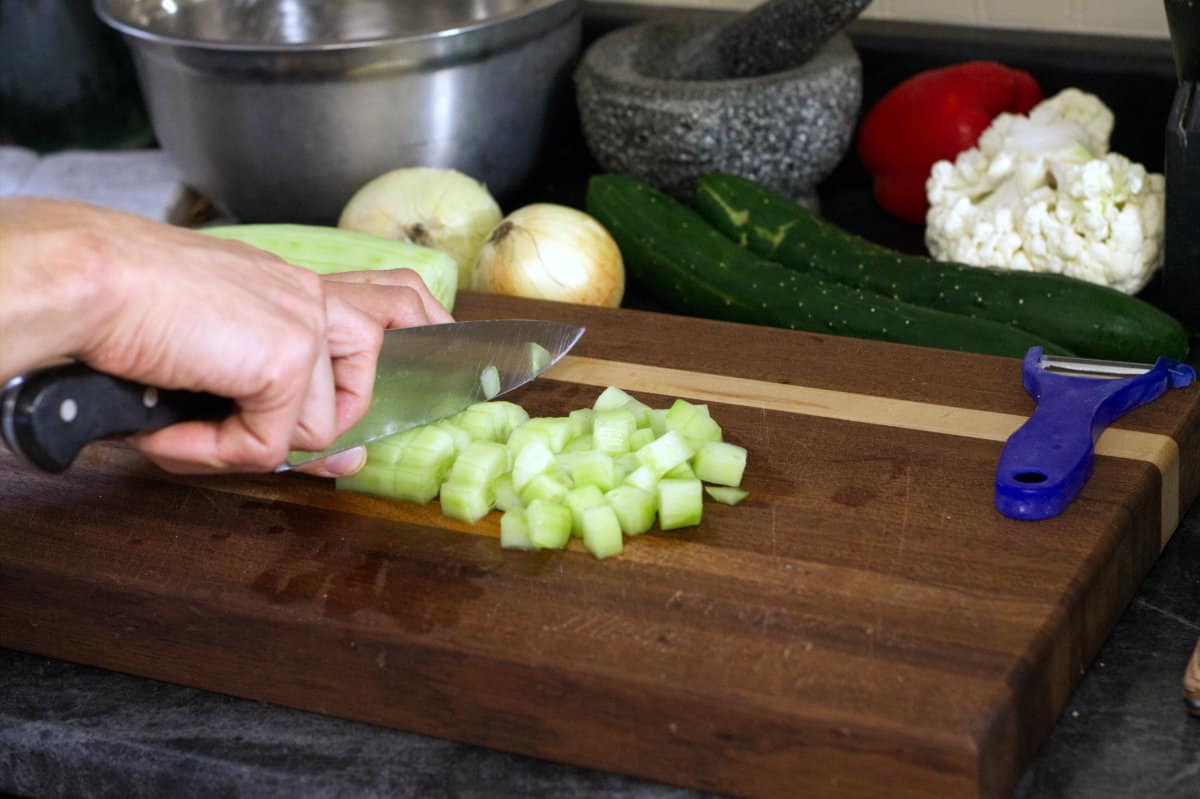
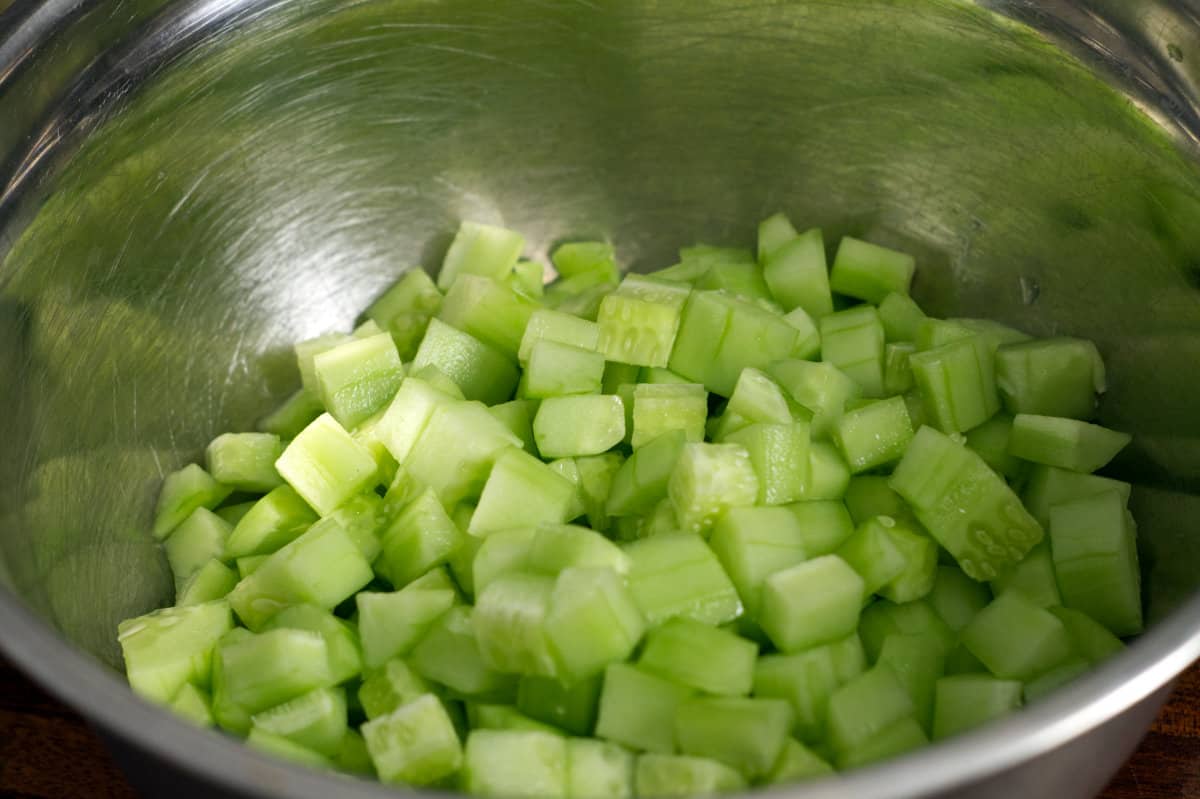
Cut the cauliflower into small bite sized florets, and the bell pepper into small dice. Peel the onion and cut it into small dice as well. Set all the vegetables aside to prepare the pickling sauce.
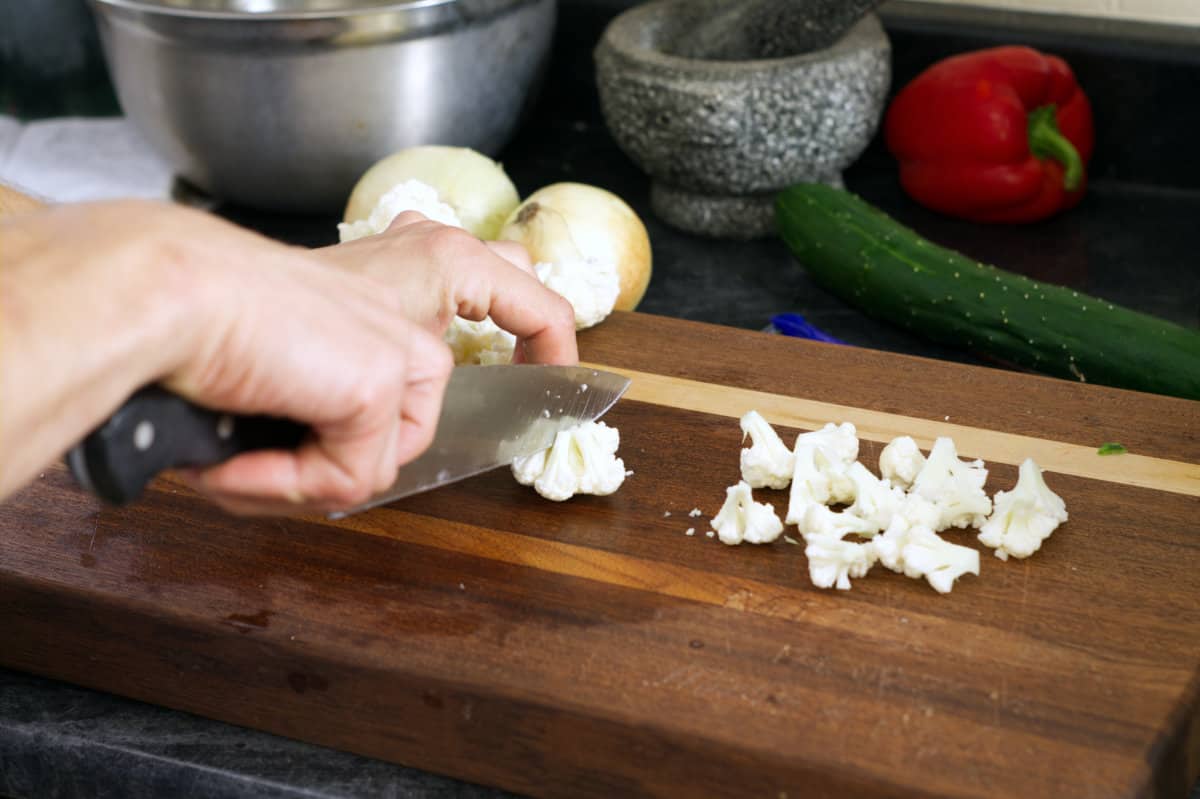
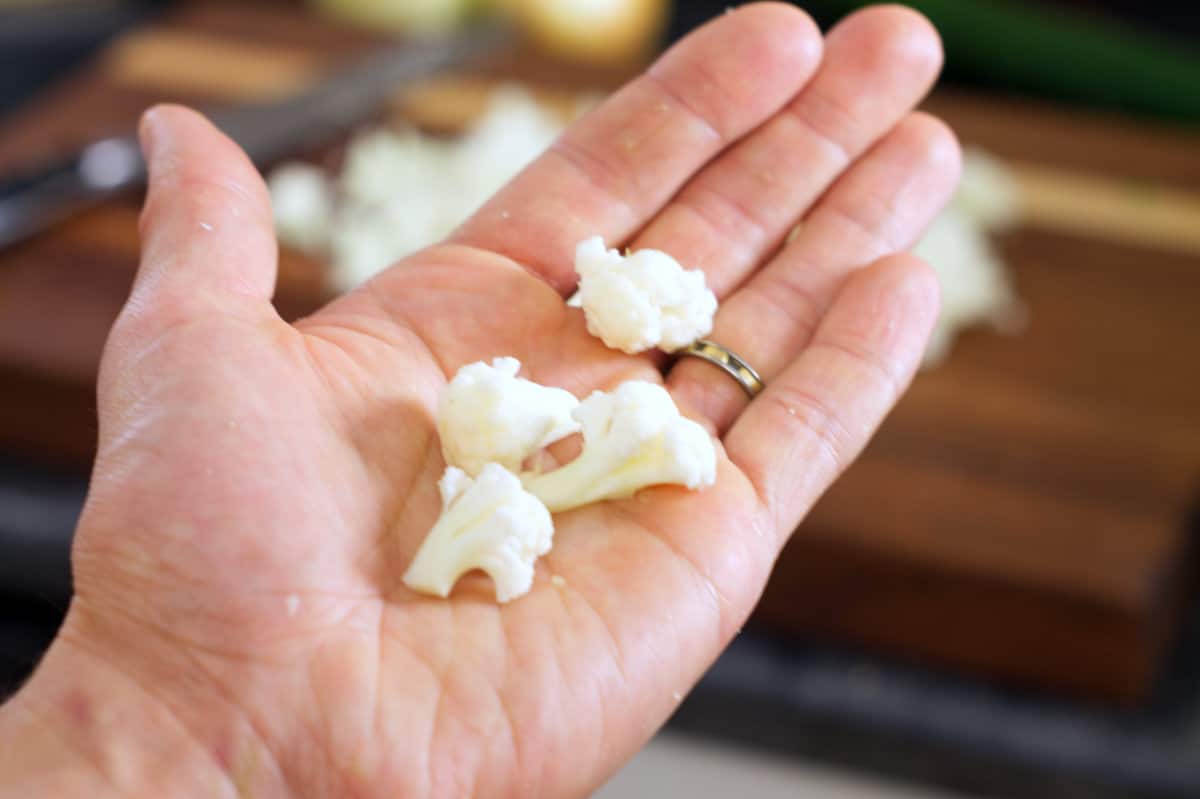
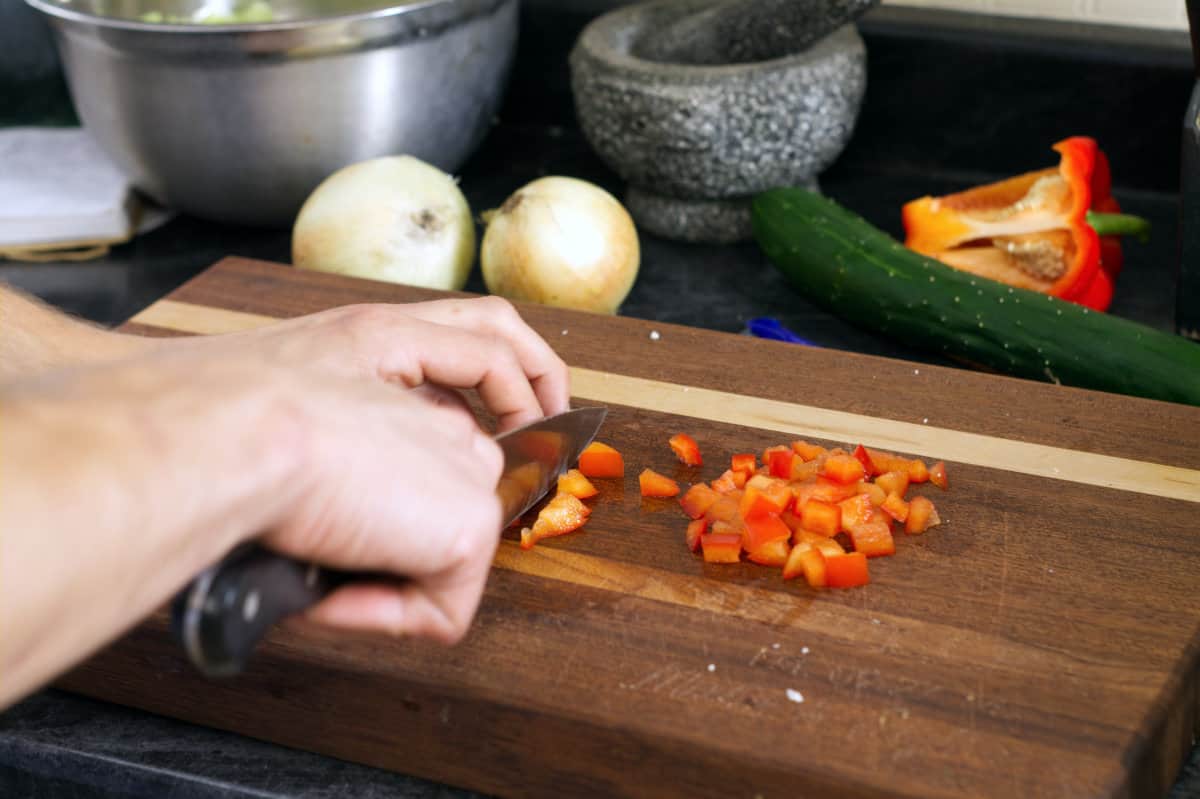
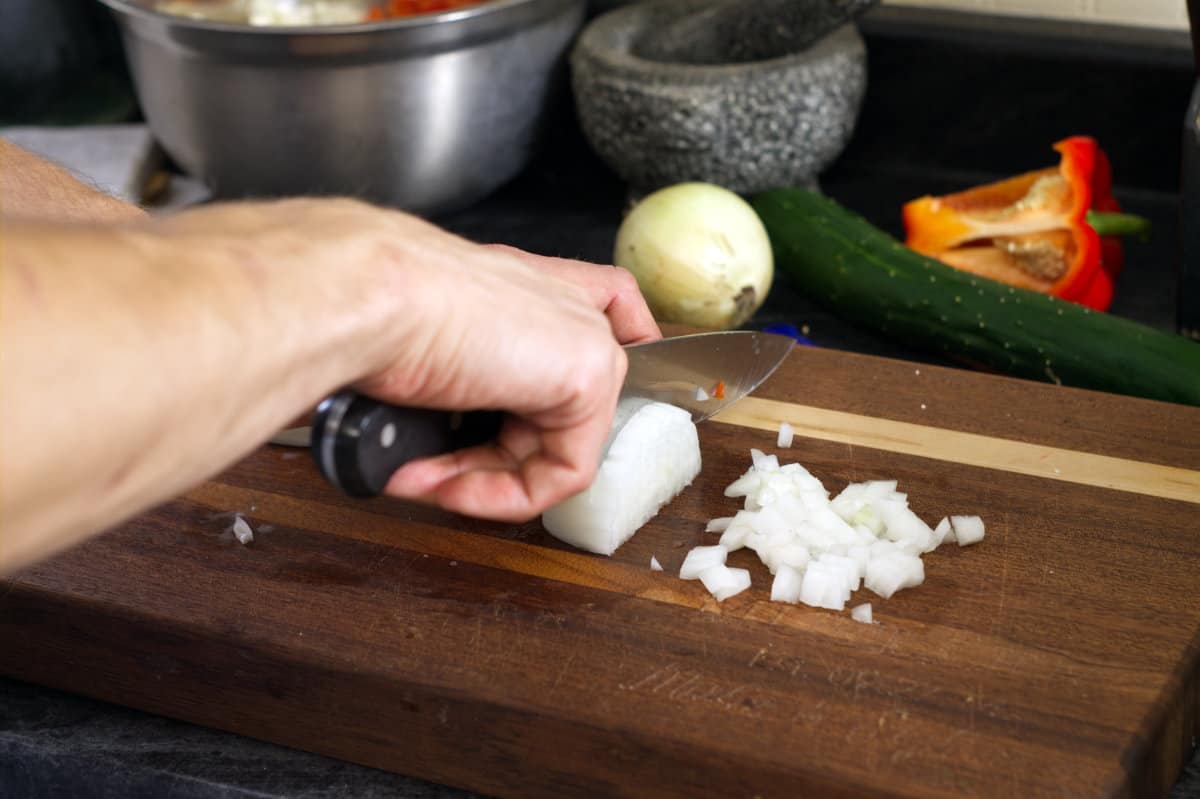
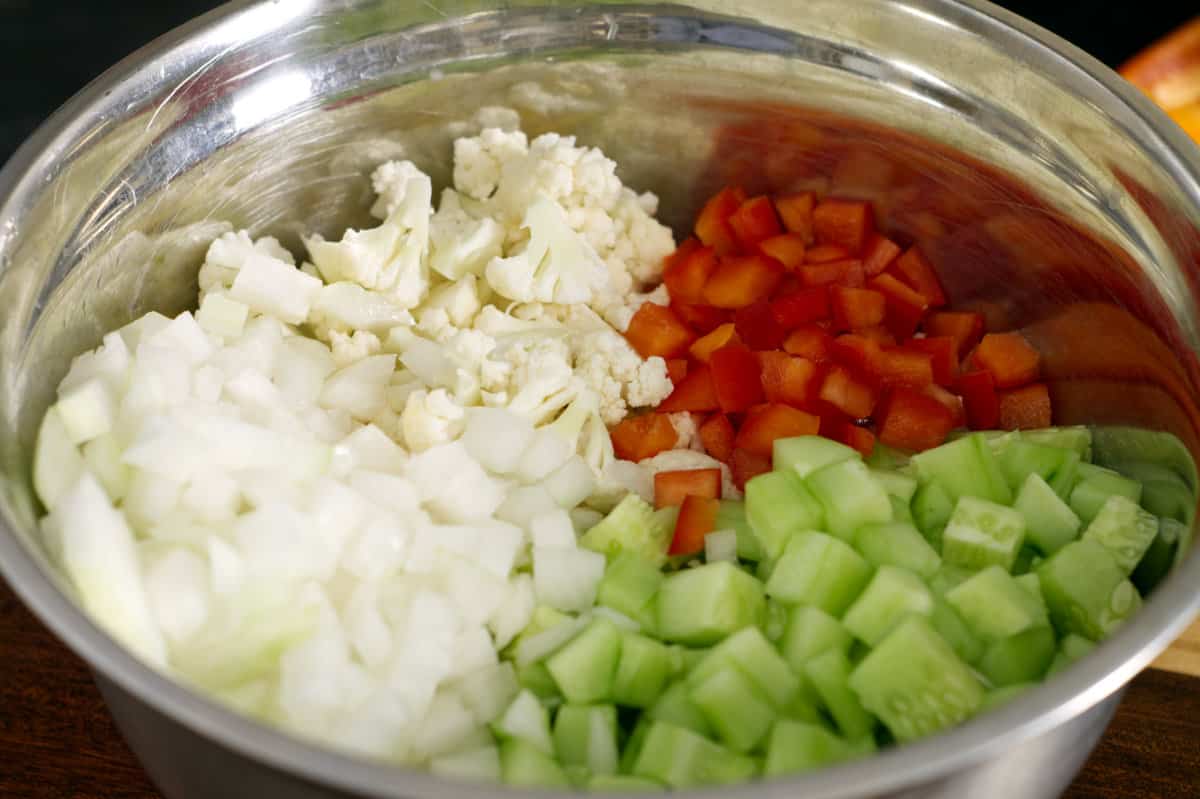
2. Measure out the sugar, vinegar, spices and flour. Mix all of them together in a large pot, and stir until a smooth 'sauce' is formed. There should be no lumps of flour.
Heat the sauce over medium low heat, stirring often, until it thickens and coats the back of a spoon.
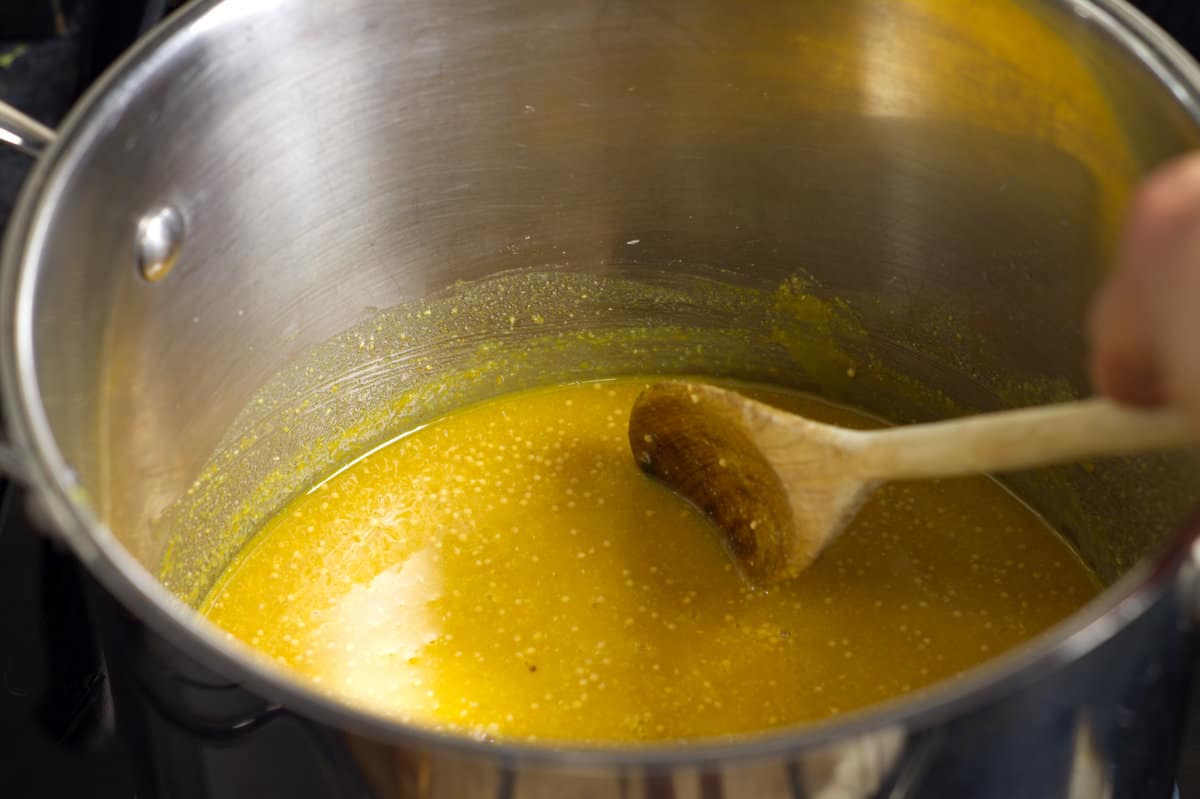
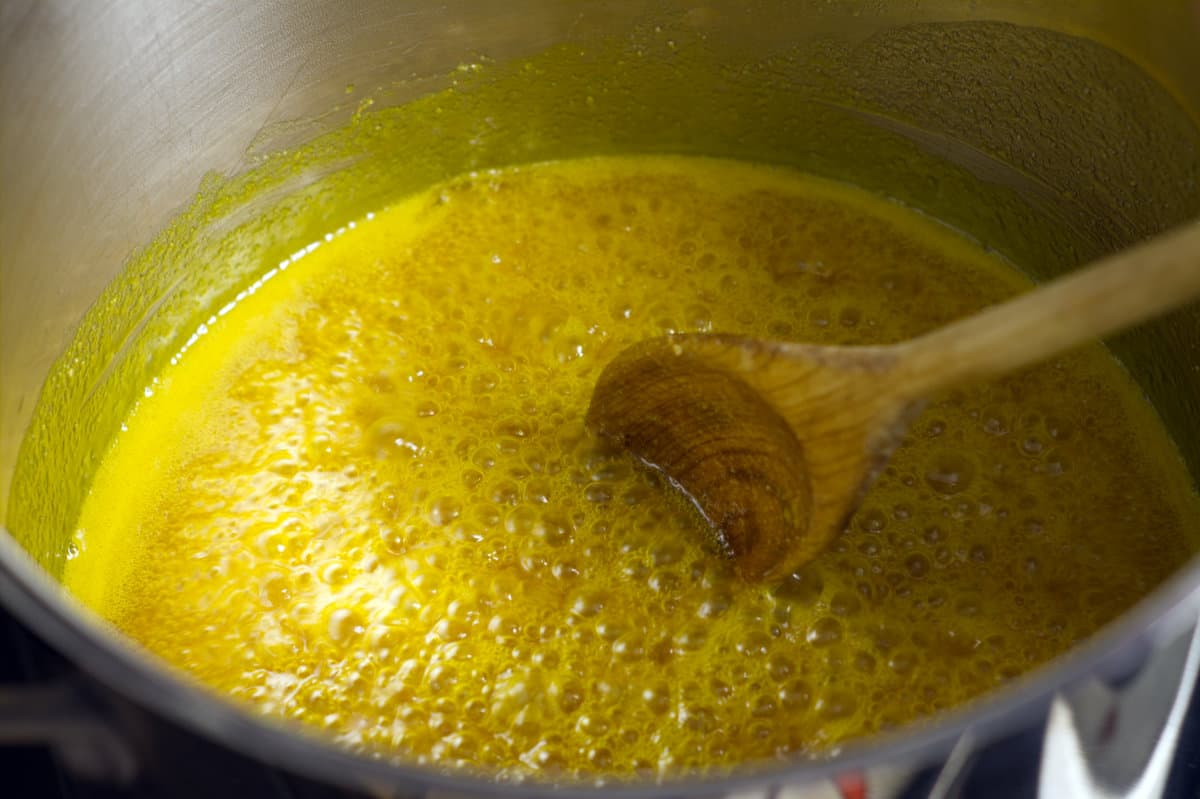
3. Drain any liquid that has been drawn from the cucumbers, and add all the cut vegetables to the thickened 'sauce'. Stir well to coat all the vegetables. Bring the pot back to a simmer, and cook the vegetables over medium low heat for 20-25 minutes. Stir often to prevent scorching.
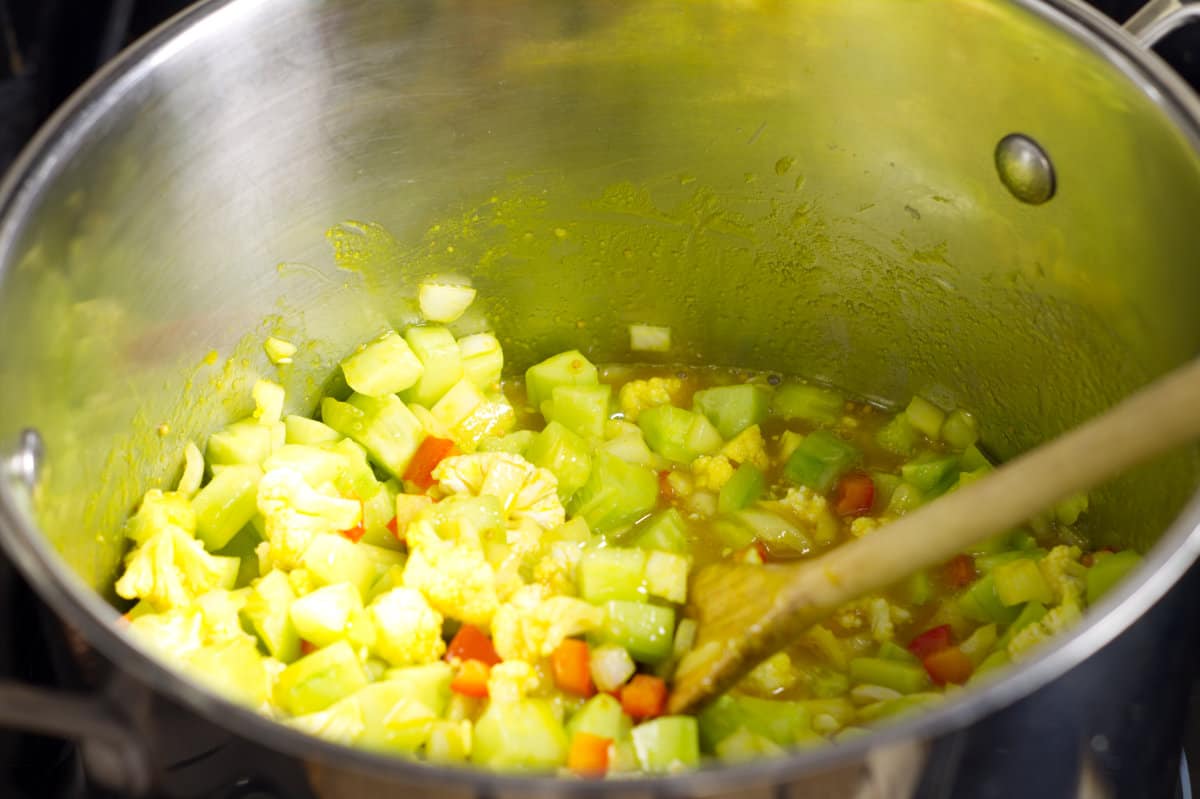
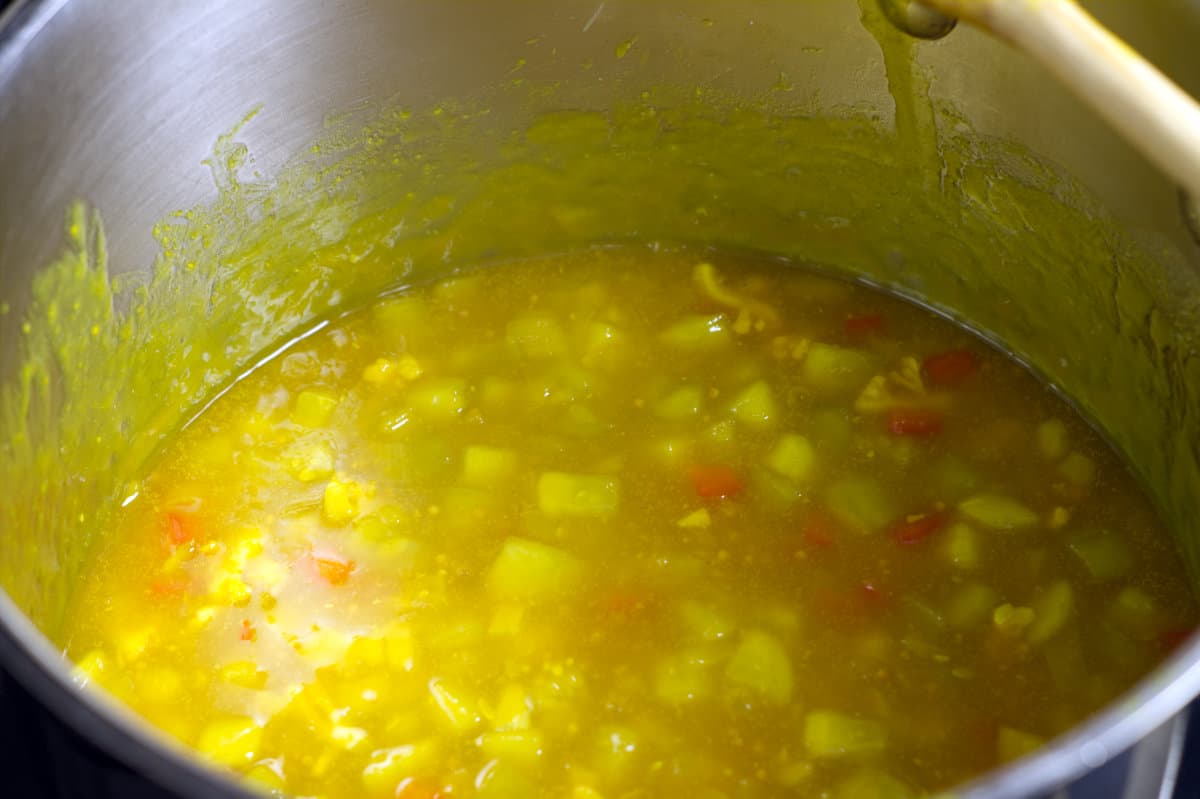
Preparing your canning equipment
While the mustard pickles are simmering on the stove, assemble, wash, and prepare all your canning equipment.
This includes: washing all equipment, pots, and jars/lids in hot soapy water, heating the washed snap lids and rings for at least 10 minutes to sterilize them, boiling the washed glass jars for 10 minutes prior to filling in a large canning pot (keep jars and lids in hot water until ready to fill), setting out a dishcloth and rack on which the processed jars can cool, ensuring you have all tongs, ladles, stir spoons, and funnels you plan on using properly washed and dried.
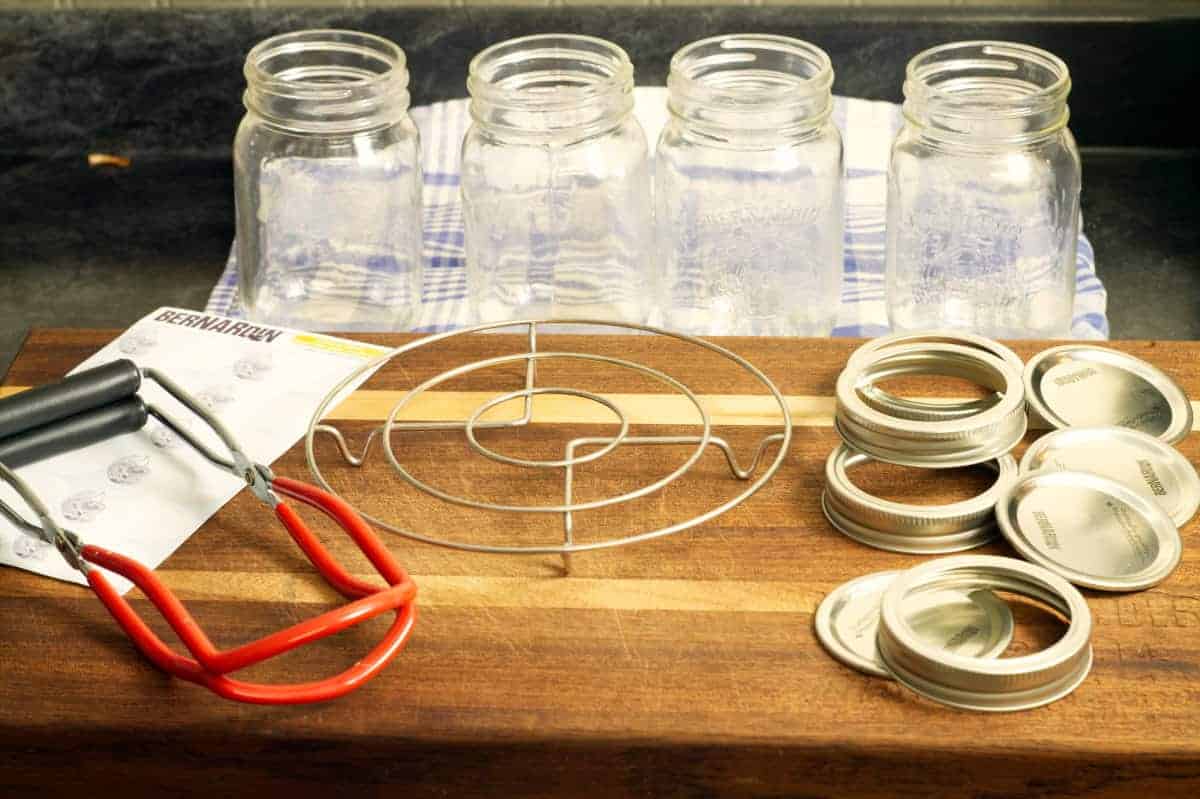
Once everything is ready to go read over the basic steps of hot water bath canning again to familiarize yourself with the process and clear up any lingering questions you may have. For this recipe, we followed the USDA Home canning guidelines for processing times and headspace requirements as described in Guide 6: Preparing and canning fermented and pickled vegetables.
Processing the mustard pickles
Use your canning tongs to carefully remove a glass jar from the hot water (one at a time). Gently pour the water back into the pot, then fill the hot glass jar with the hot mustard pickles using your ladle and funnel. Repeat this process until all glass jars are filled, leaving ½ inch of headspace at the top. Work carefully to prevent spilling, yet quickly to prevent the mustard pickles and jars from cooling too much.
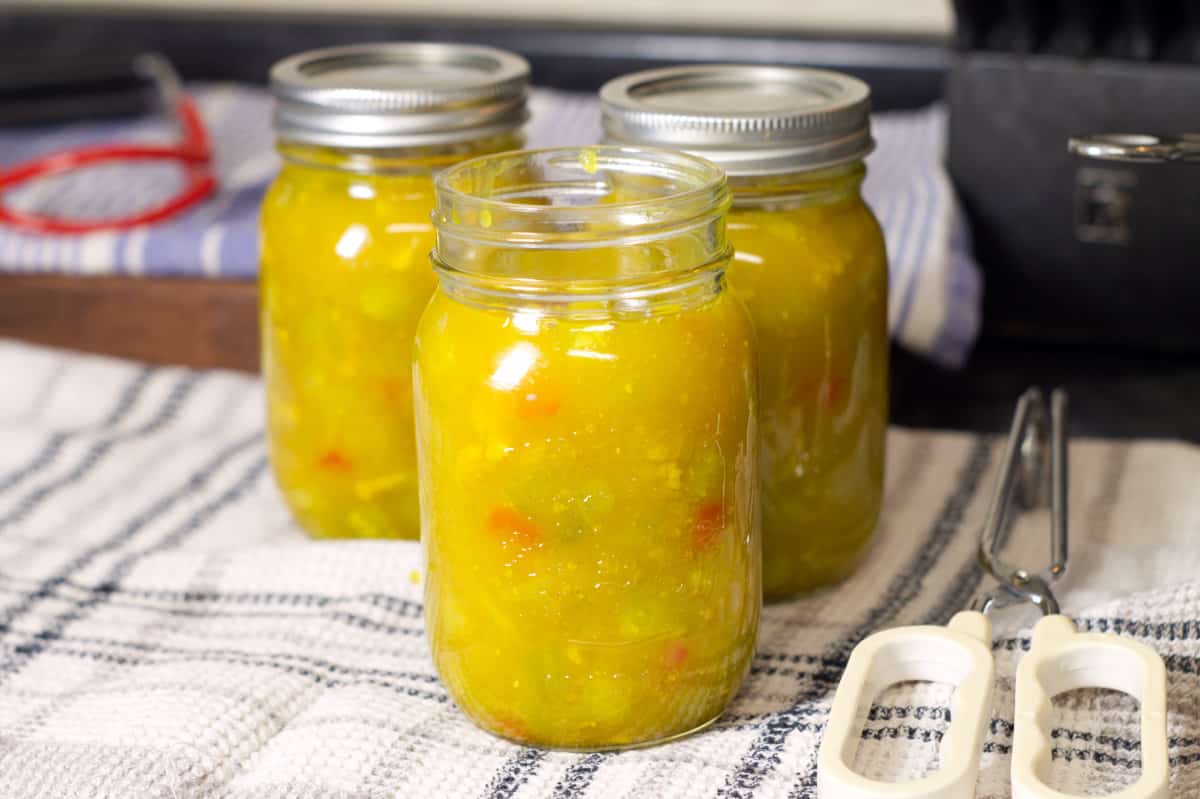
Once all the jars are filled, use a clean dampened cloth to wipe all the jar rims, removing any spilled pickle residue, and leaving a clean surface for the flat lids to seal to.
Place a snap lid on each filled jar, followed by the metal ring, making sure not to twist the ring on too tightly. Fingertip tight is plenty!
Using the canning tongs, gently place the filled jars of mustard pickles back into the water bath canner. Ensure there is at least 1 inch of water above the lids of the jars. This helps ensure even water temperature all around. It's normal for air bubbles to start escaping from the jars as soon as they are submerged, this is a good thing!
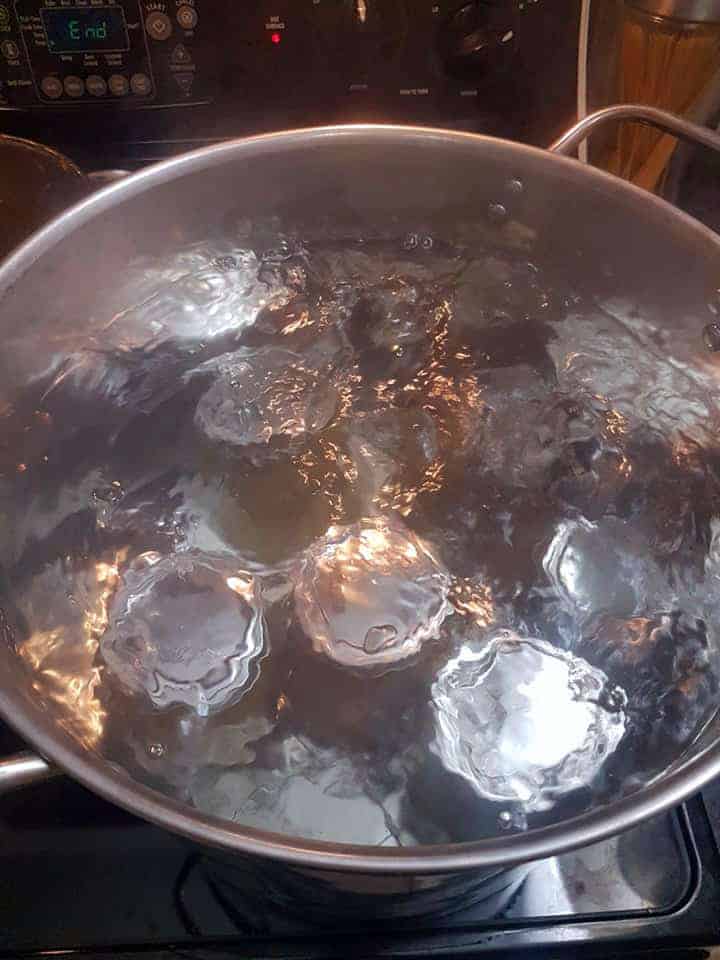
Bring the canning pot to a roiling boil, and process the mustard pickles for 5 minutes at altitudes below 1000ft, 10 minutes for altitudes between 1000ft - 6000ft, and 15 minutes for altitudes above 6000ft. Start the time only when the pot is at a rolling boil.
Cooling & Storing
Once the mustard pickles have been processed for the proper time as indicated above, turn off the pot of water and let the jars sit until the water has stopped boiling about 5 minutes. Then carefully remove the jars one at a time with your canning tongs, and place them on a dishtowel or rack to cool for 24 to 48 hours at room temperature. You should hear the lids pop as the jars begin to cool down, indicating an air-tight seal.
Once fully cooled, and all lids have 'popped', remove the metal ring from the jars, and ensure all lids have properly sealed. Sealed lids will slightly curve downwards, and won't move or make a clicking sound when pressed. Gently wipe the jars with a clean damp towel, and label the mustard pickles with the processing date. Leave the twist rings removed for long-term storage to prevent the lids from rusting. Store in a cool dark place for up to 8 months.
Any jars that did not properly seal, should be stored in the refrigerator and consumed promptly.
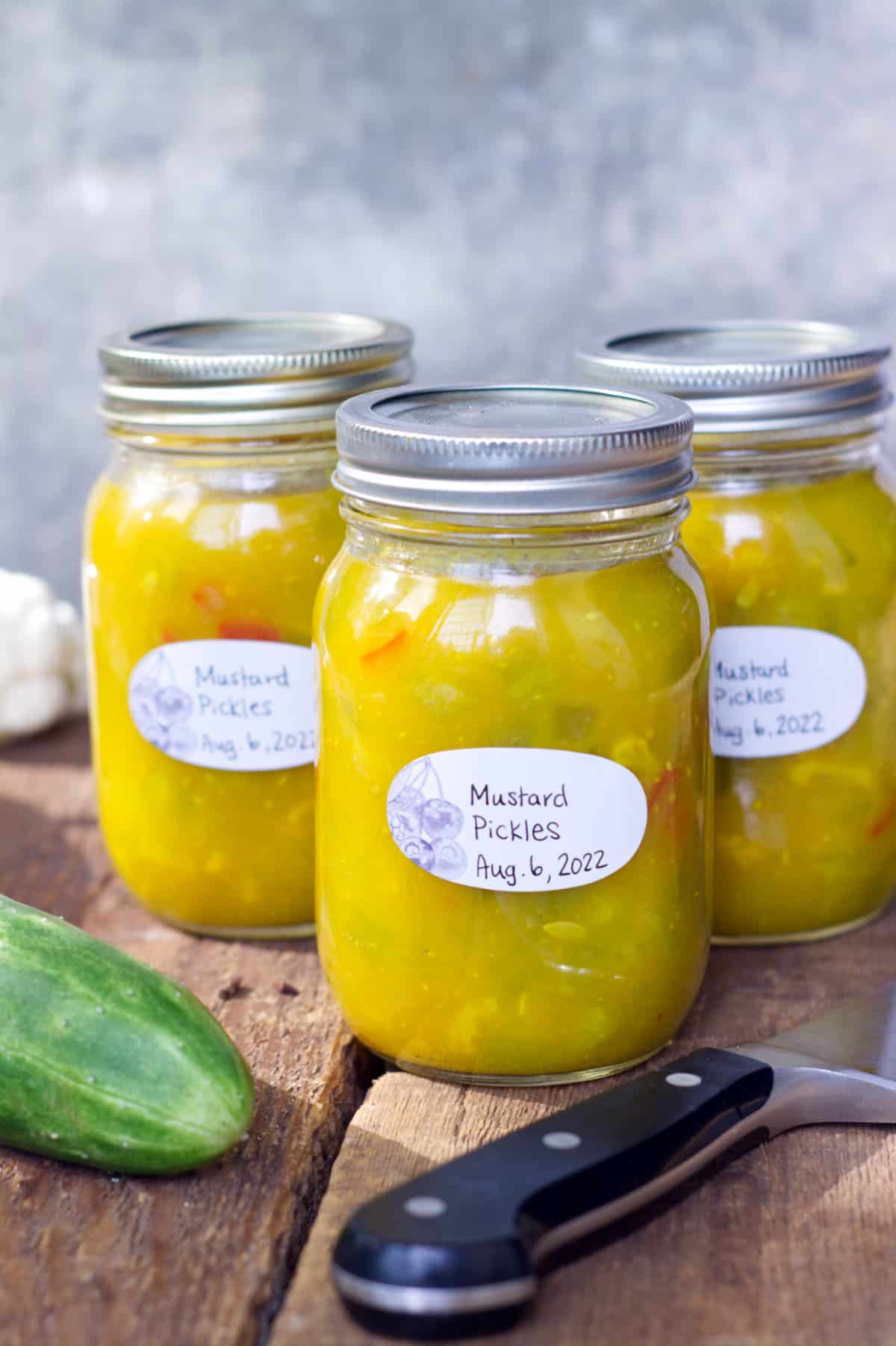
How long do homemade mustard pickles last?
As mentioned above, when properly canned, cooled, and stored, homemade mustard pickles can last up to 8 months if kept in a cool dark pantry. If only refrigerated, mustard pickles will easily last up to 4 weeks in a nonreactive, food safe container.
Recipe
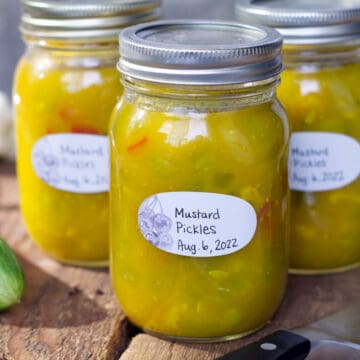
PEI Mustard Pickles
Equipment
Ingredients
For the Vegetables
- 2 liters cucumber peeled, core removed, and diced.
- ½ head cauliflower cut into small florets
- 1.5 lb white onion cut into a small dice
- 1 whole red bell pepper cut into a small dice
- 2 Tablespoon coarse salt
For The Pickling Sauce
- 3.5 cup white sugar
- 2 cup pickling vinegar
- 1 tablespoon dry mustard powder
- 1 tablespoon turmeric
- 1 tablespoon whole mustard seed
- 12 tablespoons all purpose flour
Instructions
Preparing The Vegetables & Pickling Sauce
- Begin by washing the cucumbers, cauliflower and the red bell pepper. Once washed, pat the vegetables dry, and proceed with peeling and cutting.
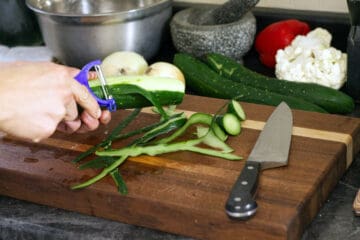
- The cucumbers should be peeled, core removed, and cut into a medium dice. Once the cucumbers are cut, sprinkle the coarse salt over the cucumbers and mix well. Set aside to let the salt draw some of the water out of the cucumbers.
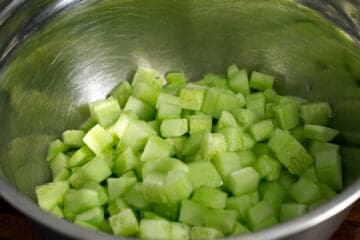
- Cut the cauliflower into small bite sized florets, and the bell pepper into a small dice. Peel the onion and cut it into a small dice as well. Set all the vegetables aside to prepare the pickling sauce.
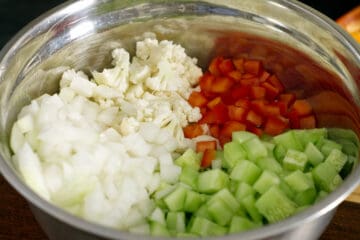
- Measure out the sugar, vinegar, spices and flour. Mix all of them together in a large pot, and stir until a smooth 'sauce' is formed. There should be no lumps of flour. Heat the sauce over medium low heat, stirring often, until it thickens and coats the back of a spoon.
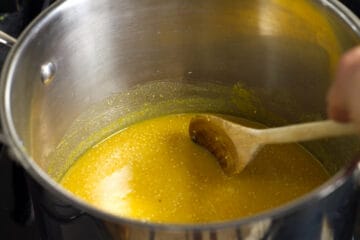
- Drain any liquid that has been drawn from the cucumbers, and add all the cut vegetables to the thickened 'sauce'. Stir well to coat all the vegetables. Bring the pot back to a simmer, and cook the vegetables over medium low heat for 20-25 minutes. Stir often to prevent scorching.
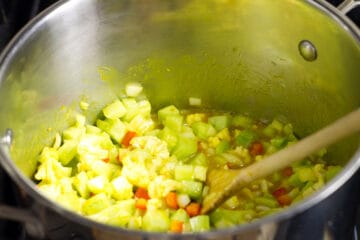
Preparing your canning equipment
- While the mustard pickles are simmering on the stove, assemble, wash, and prepare all your canning equipment. This includes: washing all equipment, pots, and jars/lids in hot soapy water, heating the washed snap lids and rings for at least 10 minutes to sterilize them, boiling the washed glass jars for 10 minutes prior to filling in a large canning pot (keep jars and lids in hot water until ready to fill), setting out a dishcloth and rack on which the processed jars can cool, ensuring you have all tongs, ladles, stir spoons, and funnels you plan on using properly washed and dried.
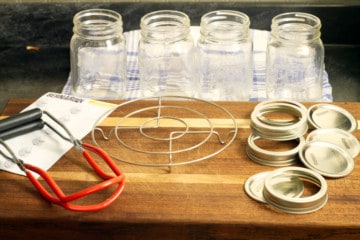
Processing the mustard pickles
- Use your canning tongs to carefully remove a glass jar from the hot water (one at a time). Gently pour the water back into the pot, then fill the hot glass jar with the hot mustard pickles using your ladle and funnel. Repeat this process until all glass jars are filled, leaving ½ inch of headspace at the top. Work carefully to prevent spilling, yet quickly to prevent the mustard pickles and jars from cooling too much.
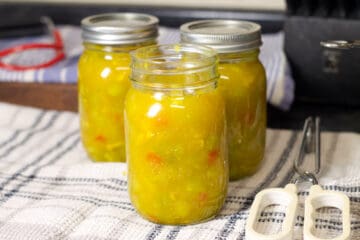
- Once all the jars are filled, use a clean dampened cloth to wipe all the jar rims, removing any spilled pickle residue, and leaving a clean surface for the flat lids to seal to. Place a snap lid on each filled jar, followed by the metal ring, making sure not to twist the ring on too tightly. Fingertip tight is plenty!
- Using the canning tongs, gently place the filled jars of mustard pickles back into the water bath canner. Ensure there is at least 1 inch of water above the lids of the jars. This helps ensure even water temperature all around. It's normal for air bubbles to start escaping from the jars as soon as they are submerged, this is a good thing!
- Bring the canning pot to a roiling boil, and process the mustard pickles for 5 minutes at altitudes below 1000ft, 10 minutes for altitudes between 1000ft -6000ft, and 15 minutes for altitudes above 6000ft. Start the time only when the pot is at a rolling boil.
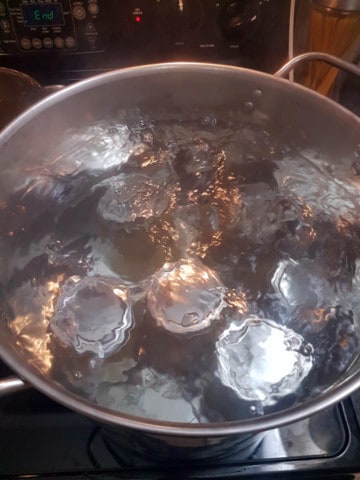
Cooling & Storing
- Once the mustard pickles have been processed for the proper time as indicated above, turn off the pot of water and let the jars sit until the water has stopped boiling, about 5 minutes. Then carefully remove the jars one at a time with your canning tongs, and place them on a dishtowel or rack to cool for 24 to 48 hours at room temperature. You should hear the lids pop as the jars begin to cool down, indicating an air-tight seal.
- Once fully cooled, and all lids have 'popped', remove the metal ring from the jars, and ensure all lids have properly sealed. Sealed lids will slightly curve downwards, and won't move or make a clicking sound when pressed. Gently wipe the jars with a clean damp towel, and label the mustard pickles with the processing date. Leave the twist rings removed for long-term storage to prevent the lids from rusting. Store in a cool dark place for up to 8 months.
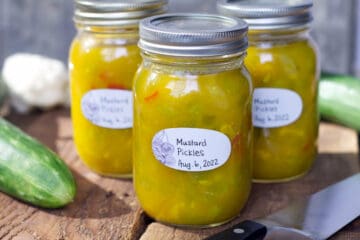
Nutrition
Nutrition info is auto-generated. This information is an estimate; if you are on a special diet, please use your own calculations.

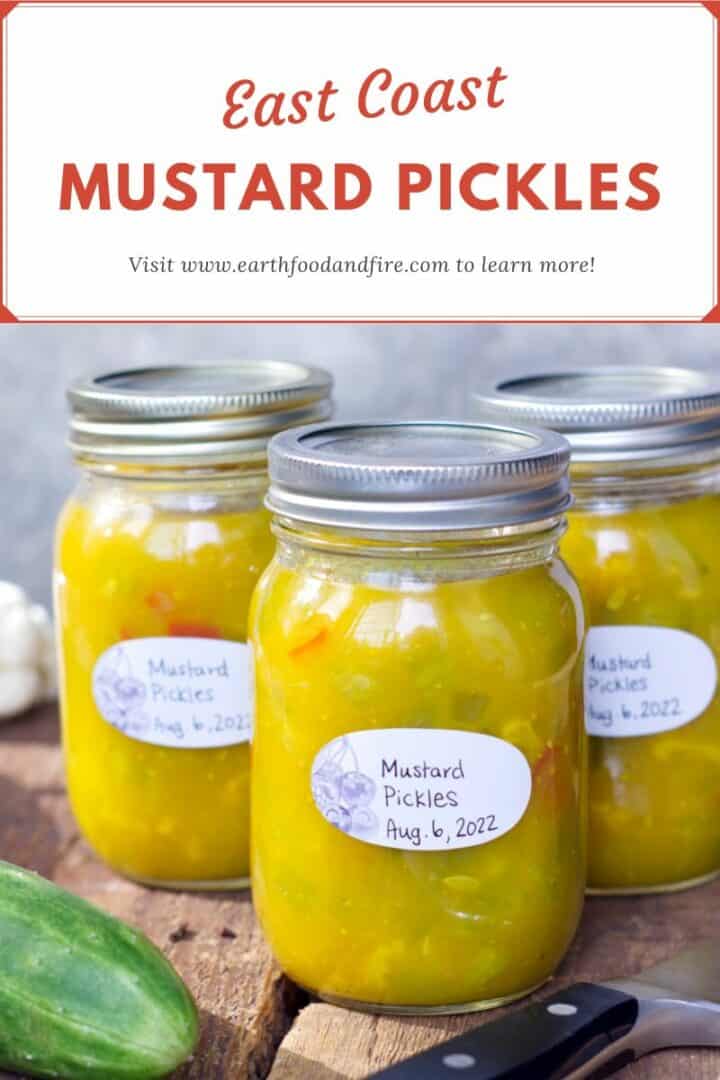
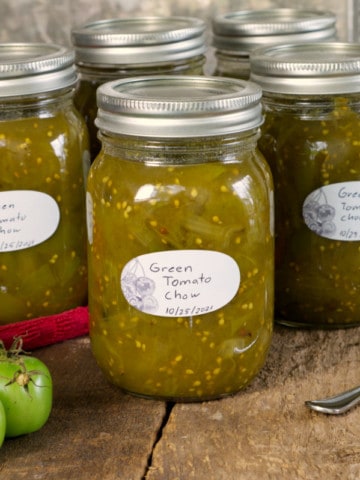
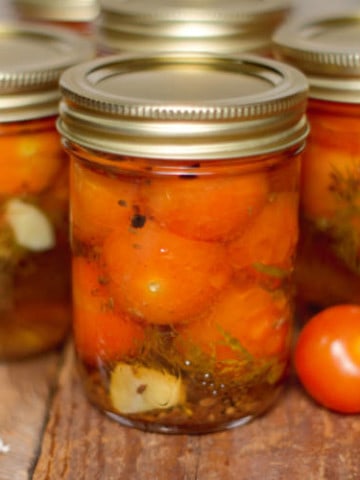
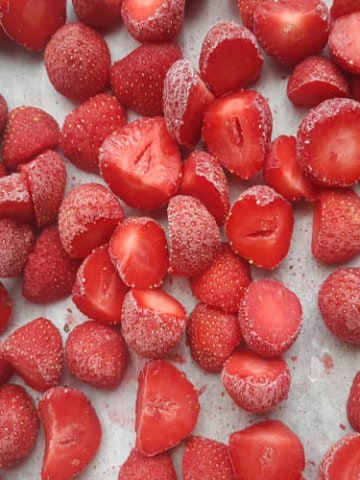
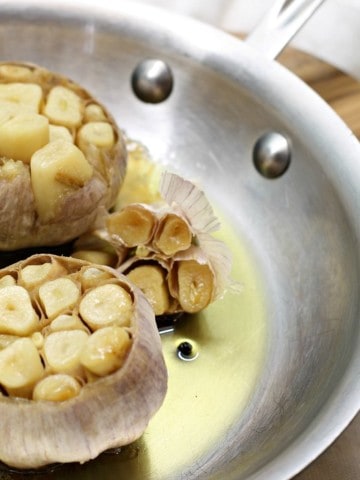
Shaun
Just finished making these today, now there setting up until tomorrow. Was pretty simple to make. And from the looks, aroma and smells plus a little sneak taste of a little i had extra i think these will be perfect. I used exactly 3lbs of cucumbers and the rest I followed exactly except for the onion. Possibly why I only got 5 pints instead of 6. Either way thank you so much for sharing the recipe. Also I tried to subscribe but never did receive an email. 5 stars all day ✌️👍.
Chef Markus
Hi Shaun, thanks for the review, glad that the recipe worked for you!
The subscription: I can actually see you subscribed, you should have received the first email and will be getting the next in the welcome series over next few weeks. Please check your spam folder, and mark us as a safe sender (Settings > Mail > Junk emal > Senders)- that should help.
Kimberley
A table staple year round. Anytime you serve potatoes- there’s a dish of mustard pickles on the table.
An Islander - not from away
James M
Hi Chef Markus,
Can the recipe be doubled and still work out as well?
Chef Markus Mueller
Hello James, Yes it can!
Eric G.
I just made this recipe this past week. Decided to make my own mustard pickles since finding them in stores proved to be difficult. Followed the recipe exactly. These are easy to make and taste awesome. Will not need to purchase mustard pickles again.
Krista
Hi! Can I substitute zucchini for the cucumber in this recipe? And, if I do not use cauliflower should the zucchini amount be increased?
Chef Markus Mueller
Hi Krista, I have personally never substituted zucchini for cucumber in this pickle recipe but I don't see why you couldn't do it! If you do leave put the cauliflower just bump up the zucchini to make up the missing bulk.
Sandra Bland
I have a large bag of smaller pickling cucumbers (similar to large dill pickles). Do I need to peel them? Could I not halve these and still use them? This would make the pickles crunchier but if i left them in the brine over night they may soften a bit. What do you think?
Chef Markus Mueller
Hi Sandra, the pickling cucumbers should work just fine.
kym
do i rinse off the course salt before adding the cucumbers to the sauce?
Chef Markus Mueller
You do not need to rinse the cucumbers. Draining and discarding any liquid drawn out of them will suffice.
Ev Lees
How long do you let the cucumbers sit in the salt and do you add your other veggies to it? Ev
Chef Markus Mueller
Hi Ev, there is no set amount of time to let the cucumbers sit in the salt for this recipe. Adding the salt to the cucumbers first helps draw out any excess moisture which could water down your end product. If you follow the steps as written, the cucumbers will likely sit in the salt for about 15-20 minutes by the time the remaining vegetables are cut and the 'sauce' has thickened and you need to add the cucumbers to it along with the other (unsalted) vegetables.
Lynn
What is the weight of 2 litres of pickling cucumbers? Can’t find conversion.
Chef Markus Mueller
Hi Lynn, there is no conversion from volume to weight as the weight will depend entirely on the cucumbers themselves (water content can vary by cucumbers). Please note the 2L volume is measured after the cucumbers are peeled, cored and diced. The pictures in our step-by-step instructions will show how large to cut the cucumbers.
Shaun
I used exactly 3 lbs and they came out to the perfect amount.
Mary N. Hitchcock
I have not tried this recipe yet since I am concerned about the amount of sugar in it ....I s there anyway we can reduce it or use another form of sugar such as Stevia ^
Chef Markus Mueller
Hi Mary, I would not recommend changing canning recipes. The sugar acts to balance out the acid and will likely also effect the consistency of the end product. Mustard pickles are supposed to be sweeter then for example a dill pickle. I can not say how using stevia would effect the consistency or flavor of the recipe.
Kelly G
Hi Markus,
Plan to use your recipe tomorrow evening for my first time making Mustard Pickles. My Mom has made them her whole life but only ever with cucumber and onion! I think she's somewhat disapproving that I plan to add cauliflower and red pepper, as that's not the "family recipe" LoL. The more veggies the better in my opinion and the bell peppers will add some nice contrasting colour.
I have a couple of questions.
Can cornstarch be used as a substitute for the flour to thicken the sauce? Someone in the family is Celiac.
Also pickling vinegar= white vinegar? Close enough?
FWIW, the "family recipe" also includes a 1/2 tsp. Ginger powder.
Glad to find your site. I'm going to look and see if you have a recipe for homemade (cooked) tomato salsa as I have received a bounty of tomatoes in exchange for my Concord grapes.
Chef Markus Mueller
Hi Kelly, apologies for the late reply. I hope the pickles turned out well.
Corn starch can be used but it does break down easier if the jars are water bath canned and can result in a runny or thin liquid..not that that's a bad thing though! You'll have to do some digging on flour > cornstarch substitution amounts..I'm not sure of the proper ratio to use right now.
We used pickling vinegar with 7% acetic acid in the recipe instead of white which normally has 5% acid. The higher acid content helps preserve the pickle recipe and prevents the chances of bacteria being able to take hold. Something to keep in mind if storing for long term in a pantry.
Happy pickling!